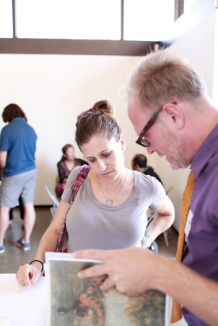Creative Communities: Artist Data User Guide
Ann Markusen w/ Greg Schrock
The inadequacy of statistical data describing the artist populations of American communities, the 50 states, and the country as a whole presents a challenge for those seeking to understand and advocate on their behalf. While recognizing the limitations of decennial census data, LINC believed the data was a place to start to give its Creative Communities more detailed understanding of the size and nature of artist populations in their respective geographic areas. The census is the only source that begins to capture artists by artistic discipline, industry, income, employment status, recent migration patterns, and a large number of socioeconomic characteristics (including age, race, gender, immigrant status, education, and homeowner status), at metropolitan as well as state levels. To aid the Creative Communities’ planning, Markusen and Schrock developed individualized data sets and maps for each community’s state and metropolitan region from the 2000 U.S. Census, and then created this manual to guide Creative Communities in using the data to inform their work.
Extracts
You may wonder whether 2000 Census data is good enough for what you most want to know. This data is the only evidence we have that captures artists adequately by artistic discipline, industry, income, employment status, recent migration patterns, and a large number of socioeconomic characteristics (including age, race, gender, immigrant status, education, and homeowner status), at metro and large city as well as state geographical levels. These findings were first made available in the fall of 2003—the next decennial Census data will not be available until 2013 . . . Although the numbers and features of artists may have changed since 2000, this data allows you to compare metro and state artists in your region with those in other places, a comparison that is not apt to have changed dramatically over the past seven years.
You can use this data, along with other types you may have, to educate people about your artistic workforce. Artists, in particular, are often thrilled to see themselves in numbers and to see how they compare with other workers and artists elsewhere. They often feel so invisible. The data are useful in crafting policies that address funding and services for artists such as housing, health care, and public arts grants. They are also useful for helping your state and local leaders, including arts organization managers, politicians, and cultural affairs, planning, and economic and community development staff design creative city and cultural industry policies. Advocacy groups will find them useful for underscoring the over- or under-representation of artists in your region and showcasing the disciplinary and arts industry specializations in the regional economy. The data can be used to build support for arts education and targeted infrastructure, workforce development, and industrial policies.

